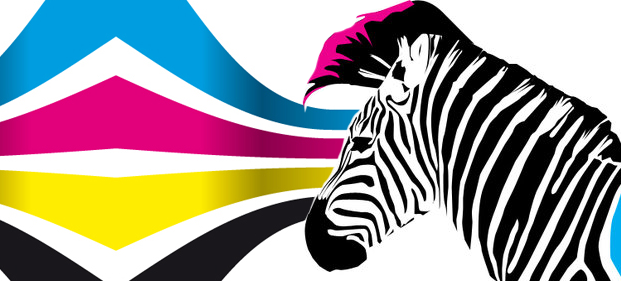
HP Designjet T920 versus Canon iPF 765 versus Epson SC T5000 Comparison
08 July 2014
User Experience

HP Designjet T920
offers a transparent cover and flat reviewing surface - enabling you to check as your job as it prints and then review afterwards. There is also an integrated output stacking tray which neatly stacks up to 50 prints at the back of the printer (ensuring the prints come out flat and in the right order with the ability to mix sizes and file orientation without any issues). The stacking tray is accessed easily from the front of the printer for easy plot finding and retrieval. The front panel offers touchscreen technology with a USB point for direct printing. The T920 also offers true front loading. The footprint W x D of this printer is 0.97 sqm.
Canon iPF 765
doesn't offer a transparent cover so prints cannot be checked while the jobs are printing. While it offers a portable media stacker it doesn't stack prints like the Designjet T920. It supports up to 20 A1 prints but there are issues when mixing sizes and orientations and reports advise that it acts more like a basket where prints can get damaged and fall to the ground. The front panel isn't touchscreen but a standard front panel. Paper is loaded from the back of the printer, so sufficient space for access will be required around the printer. The footprint W x D of this printer is 1.43 sqm.
Epson SC T5000
offers a standard front panel, no USB printing and provides a basket to catch prints - which is not a true stacker. It can collect up to 20 A1 prints (although there are issues when mixing sizes and orientation causing prints to be damaged and fall to the ground). The footprint W x D of this printer is 1.15 sqm.
Ink Usage and Cost per Copy

HP Designjet T920*
uses 1.04ml/sqm of ink at a cost per copy of £0.37** per ml. The Designjet offers 3 sizes of Matte Black ink (69ml, 130ml and 300ml) and 2 sizes of all of the other colours (C, G, M, PK, Y - 40ml and 130ml). Broken down, it uses 0.30ml/sqm for mono lines, 0.22ml/sqm for colour lines, 6.14ml/sqm for render, 4.3ml for normal cleaning, 7.7ml for strong cleaning.
Canon iPF 765*
uses 1.41ml/sqm of ink at a cost per copy of £0.56** per ml. The Canon offers all inks at 130ml (MBK, C, M, Y, K). Broken down, it uses 0.399ml/sqm for mono lines, 0.32ml/sqm for colour lines, 7.51ml/sqm for render, 7.8ml for normal cleaning, 29.1ml for strong cleaning.
Epson SC T5000
uses 1.62ml/sqm of ink at a cost per copy of £0.57** Euros per ml. The Epson offers 3 sizes of cartridge for all inks (C, M, Y, PK, MK - 110ml, 350ml, 700ml). Broken down, it uses 0.30ml/sqm for mono lines, 0.64ml/sqm for colour lines, 9.62ml/sqm for render, 4.1ml for normal cleaning, 26.5ml for strong cleaning.
*Print based on 25% colour lines, 55% mono lines, 5% GIS, 10% low coverage retail and 5% high cover retail
** Based on Euro to pound exchange rates at time of article where 1 euro = £0.79
Total Cost of Ownership and Running Costs

HP Designjet T920*
Total TCO - £3591.37**; Total running cost £856.94**
Canon iPF 765*
Total TCO - £3802.63**; Total running cost £859.32**
Epson SC T5000*
Figures unavailable at time of blog
*Based on 160sqm/month; 50% mono lines, 40% colour lines, 10% renders
** Based on Euro to pound exchange rates at time of article where 1 euro = £0.79
Print Speed

HP Designjet T920
prints 21 sec/page on A1/D
Canon iPF 765
prints 26 sec/page on A1/D
Epson SC T5000
prints 25 sec/page on A1/D
Memory and Hard Disk Capacity

HP Designjet T920
offers 32 GB virtual memory and 320 GB hard disk
Canon iPF 765
offers 32 GB memory and 250 GB hard disk
Epson SC T5000
prints via the driver using your computers memory rather than onboard printer memory (which may impact your PC processing speed for other jobs)
Line and Image Quality

HP Designjet T920
offers a minimum line thickness** of 0.07mm and a black optical density of L*: 22.3. The HP has true grey ink and offers more defined text.
Canon iPF 765
offers a minimum line thickness** of 0.15mm and a black optical density of L*: 27.4. The Canon can only show the grey by dot spacing rather than via true grey ink and the definition of text is less defined than with the HP printer.
Epson SC T5000
offers a minimum line thickness** of 0.13mm and a black optical density of L*: 30.7. The Epson can only show the grey by dot spacing rather than via true grey ink and the definition of text is less defined than with the HP printer. While the specification of the Epson advised of a small droplet technology which provided 0.02mm width, it has to be said that while it can produce this width of droplet, the placement of droplets on the media cannot be controlled to create lines of i0.02mm width.
* The lower the L value the better
** All prints measured using the same print on plain paper using normal mode
Flexibility to print from virtually anywhere

HP Designjet T920
offers ePrint & Share - which provides: print from smartphone or tablet, driverless printing, use of 'any' email account, print from AutocadWS, email printing, Cloud features (save & share), access your FTP, Automatic FW upgrades
Canon iPF 765
offers Cloud features (only through a Google Drive account) and use of email accounts is restricted to gmail account holders only
Epson SC T5000
does not offer any of the options available with either the HP or Canon printers



